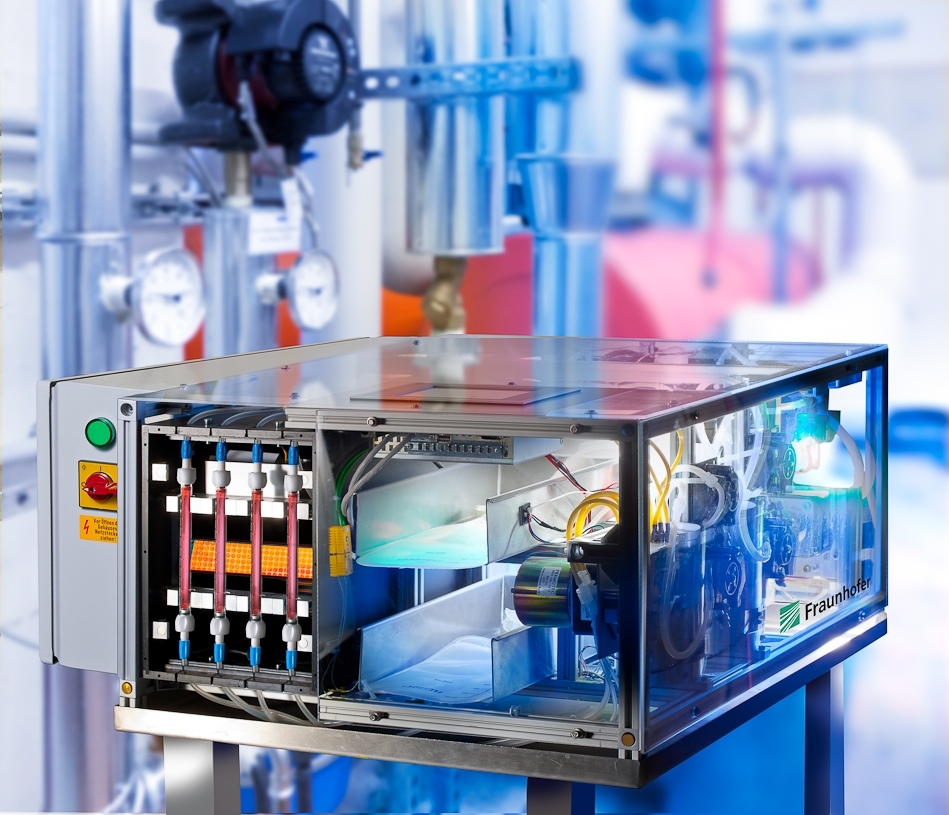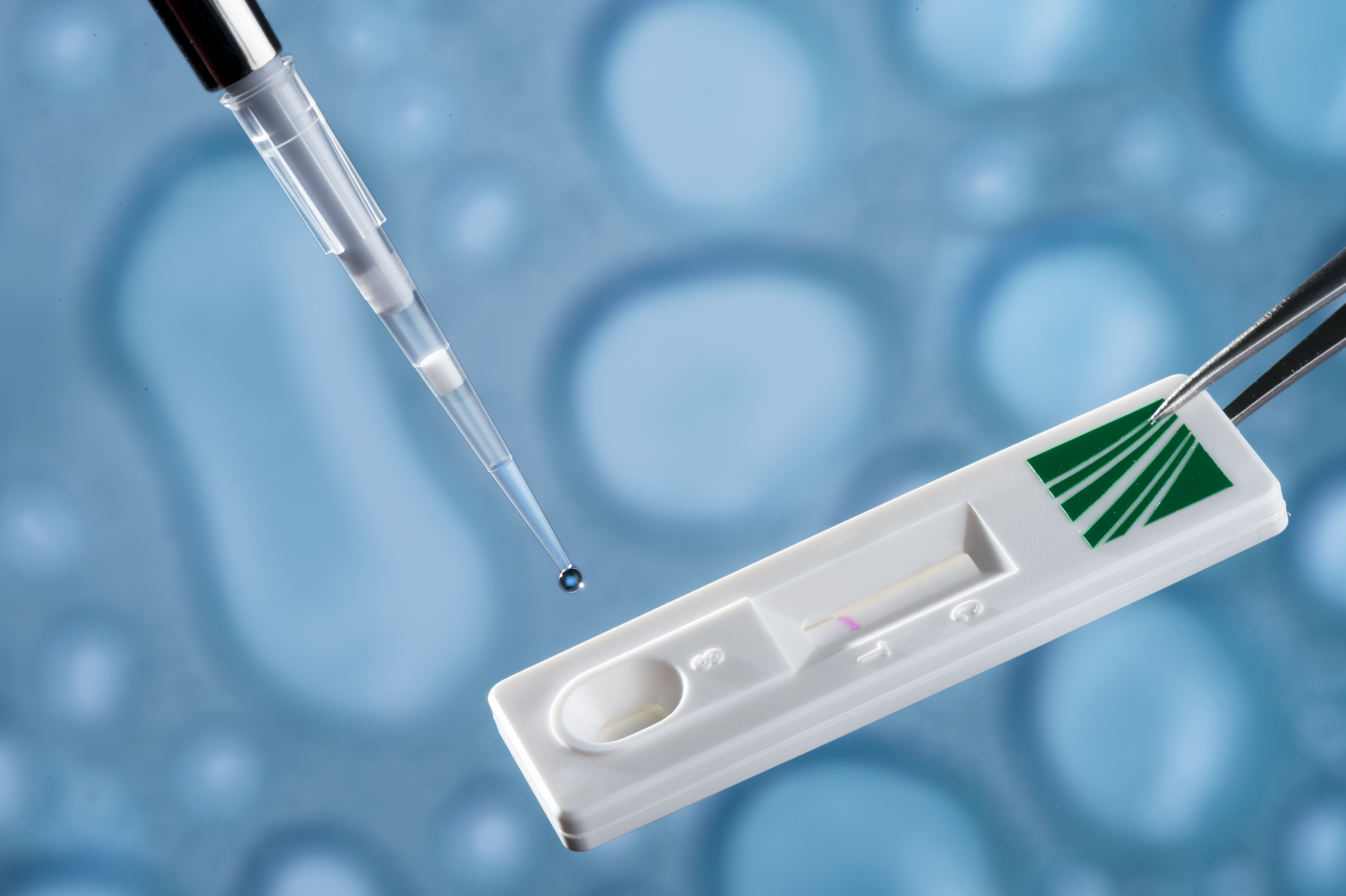A biosensor can be used to detect an analyte via a biological element and then generate a physical signal. Biosensors are therefore predestined for use in a broad spectrum of areas, from biotechnology to environmental physics. We develop biosensors to detect microbial components, e.g. for analysis of pyrogens or monitoring of drinking water.
Biosensors
Biosensors – signals from biological reactions
A biosensor consists of a biological detection element and a physical sensor (transducer). The biological component may consist of an enzyme, an antibody, DNA, receptors, but also whole cells and tissue sections. After interaction of the substance to be tested with the biological component, initially a biological-chemical signal is produced, which is converted by the transducer into an electrical or optical signal. Biosensors are usually classified according to their underlying physical measurement principle. There are therefore electrochemical sensors, optical sensors and whole-cell biosensors.
Applications and developments
The Molecular Cell Technology Group has many years of experience in the development of biosensors. The diverse fields of application of biosensors range from biotechnology to food technology, medical technology, electrochemistry and environmental analysis. We develop suitable biological sensors for your needs, from the selection of cells to the evaluation of the physical signal.
Toxin biosensors for monitoring drinking water
Because biosensors are well suited for controlling air, soil and water, they can make an important contribution to the detection and elimination of biological hazards. For example, both microbiological and mammalian whole-cell biosensors, which respond rapidly to the entry of toxic compounds, have been provided for online monitoring of drinking water piping systems (AquaBioTox, Toxikomb projects). After extensive screening, we selected two bacterial strains and a mammalian cell line, which – immobilized on a carrier material – were circulated with test fluid in small bioreactors.
ImmuStick – Test strip for pyrogen detection
With the ImmuStick we are developing a novel analysis system for pyrogens based on biosensor detection. With a classical, competitive immunoassay pyrogens are detected via immobilized receptors of the innate immune system (PRRs) in a test strip. These biosensors are also excellently suited for quality control of medical devices and pharmaceuticals which have to be shown to be free of pyrogens. In the field of hygiene (hospital to commercial kitchen), the use of such biosensors as rapid on-site analysis is also conceivable.
 Fraunhofer Institute for Interfacial Engineering and Biotechnology IGB
Fraunhofer Institute for Interfacial Engineering and Biotechnology IGB
